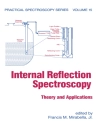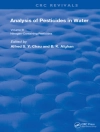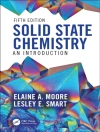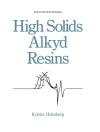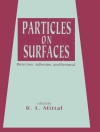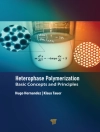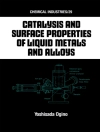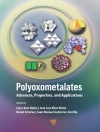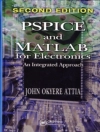In-Situ Transmission Electron Microscopy Experiments
Design and execute cutting-edge experiments with transmission electron microscopy using this essential guide
In-situ microscopy is a recently-discovered and rapidly-developing approach to transmission electron microscopy (TEM) that allows for the study of atomic and/or molecular changes and processes while they are in progress. Experimental specimens are subjected to stimuli that replicate near real-world conditions and
their effects are observed at a previously unprecedented scale. Though in-situ microscopy is becoming an increasingly important approach to TEM, there are no current texts combining an up-to-date overview of this cutting-edge set of techniques with the experience of in-situ TEM professionals.
In-Situ Transmission Electron Microscopy Experiments meets this need with a work that synthesizes the collective experience of myriad collaborators. It constitutes a comprehensive guide for planning and performing in-situ TEM measurements,
incorporating both fundamental principles and novel techniques. Its combination of technical detail and practical how-to advice makes it an indispensable introduction to this area of research.
In-Situ Transmission Electron Microscopy Experiments readers will also find:
- Coverage of the entire experimental process, from method selection to experiment design to measurement and data analysis
- Detailed treatment of multimodal and correlative microscopy, data processing and machine learning, and more
- Discussion of future challenges and opportunities facing this field of research
In-Situ Transmission Electron Microscopy Experiments is essential for graduate students, post-doctoral fellows, and early career researchers entering the field of in-situ TEM.
Tabella dei contenuti
Preface xiii
Acknowledgments xvii
List of Abbreviations xix
About the Author xxiii
1 In-Situ TEM 1
1.1 Introduction 1
1.2 General Scope of the Book 2
1.3 Why In-Situ TEM 3
1.4 TEM: Overview 4
1.4.1 Historical Perspective 4
1.4.2 Electron–Sample Interactions 4
1.4.3 Overview of Modern TEM 5
1.4.3.1 Electron Source or Electron Gun 5
1.4.3.2 Lenses 7
1.4.3.3 Lens Aberrations 7
1.4.3.4 Aberration Correctors 9
1.4.4 Data Acquisition Systems 9
1.4.4.1 Types of Detectors 9
1.5 TEM/STEM-Based Characterization Techniques 11
1.5.1 Diffraction 11
1.5.2 TEM Imaging Modes 12
1.5.3 Stem 14
1.5.4 Analytical TEM 14
1.5.4.1 Chemical Analysis 15
1.5.4.2 Eftem 19
1.5.4.3 Spectrum Imaging (SI) 20
1.6 Other Techniques 20
1.6.1 Lorentz Microscopy 20
1.6.2 Holography 22
1.6.2.1 In-Line Holography 22
1.6.2.2 Off-Axis Holography 22
1.6.3 UEM and DTEM 23
1.7 Introduction to Different Stimuli Used for In-Situ TEM 24
1.7.1 Heating (Chapter 3) 24
1.7.2 Cooling (Cryo TEM – Chapter 4) 24
1.7.3 Interactions with Liquid/Electrochemistry (Chapter 6) 24
1.7.4 Interaction with Gas Environment/Catalysis (Chapter 7) 25
1.7.5 Other Stimuli Not Included in this Book 25
1.7.5.1 Mechanical Testing 25
1.7.5.2 Ion Radiation/Implantation 25
1.7.5.3 Biasing 27
1.7.5.4 Magnetization 28
1.8 Potential Limitations and Cautions 29
1.9 Take-Home Messages 31
References 31
2 Experiment Design Philosophy 41
2.1 General 41
2.2 Choice of Technique and the Microscope 44
2.2.1 Stimulus and Technique Selection 44
2.2.2 Microscope Selection 45
2.2.2.1 Operating Voltage 45
2.2.2.2 TEM/STEM and Pole-Piece Gap 46
2.2.2.3 Image Acquisition System and Detectors 46
2.2.3 Development or Modification of New Tool 47
2.3 TEM Holder Design and Selection 47
2.4 Specimen Design and Preparation 48
2.4.1 Direct Dispersion on a TEM Grid 48
2.4.2 Sintering Pallets 49
2.4.3 Ultramicrotomy 50
2.4.4 Electropolishing 50
2.4.5 Mechanical and Ion Milling 50
2.4.6 Focused Ion Beam (FIB) 52
2.4.7 Tripod Polishing 54
2.4.8 Cryo Sample Preparation 54
2.5 Guidelines for Experimental Setup 55
2.5.1 Electron Beam Effects 55
2.5.2 Choice of TEM Grid and Support Material 56
2.5.2.1 Reactivity of Sample with Grid and/or Support Material 56
2.5.2.2 Reactivity of TEM Grids Upon Heating 57
2.5.2.3 Reactivity of TEM Grids in Gaseous Environment 58
2.5.2.4 Reactivity of Liquids with the Windows 59
2.5.2.5 Reactivity of Gases/Liquids with the TEM Holder Parts 59
2.5.3 Purity of Gases 60
2.5.4 Liquid Cell Experiments 62
2.5.5 Experiments Using Other Stimuli 63
2.6 Practical Example of Designing In-Situ TEM Experiment 63
2.6.1 Growth of Ga N Nanowires Using ETEM 63
2.6.2 Applications of Quantitative Data 64
2.6.2.1 Physical and Materials Science 66
2.6.2.2 Catalysis 67
2.7 Review 67
References 68
3 In-Situ Heating 77
3.1 History 77
3.2 Currently Available Heating Holders 78
3.2.1 Direct Heating Holder 79
3.2.2 Indirect Heating Holders 79
3.2.2.1 Furnace Heating Holders 79
3.2.2.2 MEMS-Based Heating Holders 82
3.3 Experimental Considerations 84
3.3.1 General 84
3.3.2 Electron Beam 86
3.3.3 Sample Temperature at Nanoscale 88
3.3.4 Specimen Design and Selection 90
3.3.5 Thermal Drift 91
3.4 Select Applications 92
3.4.1 Dislocation Motion 93
3.4.2 Nucleation, Precipitation, and Crystallization 94
3.4.3 Sintering 98
3.4.4 Thermal Stability of Materials 100
3.4.4.1 Alloys 100
3.4.4.2 Core–Shell Structures 100
3.4.4.3 2-D Materials 102
3.4.5 Phase Transformation 102
3.4.6 Materials Synthesis 104
3.5 Limitations and Possibilities 105
3.6 Chapter Summary 106
References 106
4 In-Situ Cryo-TEM 115
4.1 Historical Perspective 116
4.2 Specimen Holder Design and Function 116
4.3 Specimen Design and Preparation 119
4.4 Practical Aspects of Performing Cryogenic Cooling 121
4.5 Some Noteworthy Applications 122
4.5.1 Mitigating Radiation Damage 123
4.5.1.1 Structure of Polymers 124
4.5.1.2 Structure of MOF and Zeolites 125
4.5.1.3 Cryo-TEM for Energy Materials 126
4.5.1.4 Reactions in Liquids 128
4.5.1.5 Quantum and 2-D Materials 129
4.5.2 Phase Transformations Below RT 132
4.5.3 Correlative In-Situ Experiments at Low Temperature 135
4.5.3.1 Mechanical Testing 135
4.5.3.2 Magnetic Field 136
4.6 Benefits and Limitations 137
4.7 Chapter Summary 138
References 138
5 Designing Liquid and Gas Cell Holders 145
5.1 Historical Perspective 146
5.2 Design Philosophy 146
5.3 Windows 149
5.3.1 Image Resolution: Thickness and Material Properties of the Windows 149
5.3.2 Strength and Flexibility 150
5.3.3 Tolerance for the Pressure Difference 151
5.3.4 Inert or Corrosion Resistant 153
5.4 Microfabricated Window Cell (Microchips) 154
5.4.1 Static Cells 157
5.4.2 Flow Cells 159
5.4.3 Incorporation of Other Stimuli 161
5.4.4 Monolithic Microchips 162
5.5 Examples of Modified Window Holders 163
5.5.1 Redesigning the Microchips for Commercial Holder 164
5.5.2 Modified Window Microchips and TEM Holder Combination 166
5.5.3 Non-window Cell Holder to Incorporate Other Stimuli 166
5.6 Take Home Message 167
References 168
6 In-Situ Solid–Liquid Interactions 173
6.1 Historical Perspective 173
6.2 Holder Design and Selection 175
6.2.1 Closed Cells 175
6.2.1.1 Graphene Cells 175
6.2.1.2 Microfabricated Window Cell 178
6.2.2 Limitations of Closed Cells and Need for External Stimuli 178
6.2.3 Flow Reactors: Microfluidic Design 178
6.2.4 Electrochemical Cell: Biasing 181
6.2.5 Heating in Liquids 182
6.3 Specimen Design and Preparation 184
6.4 Data Acquisition 185
6.5 Practical Challenges 185
6.5.1 Sample Loading 185
6.5.2 Electron Beam Effects 187
6.5.3 Windows Bulging 188
6.5.4 Interaction of Sample with Windows 189
6.6 Select Examples of Applications 190
6.6.1 Nucleation and Growth of Nanoparticles 190
6.6.2 Corrosion/Oxidation 192
6.6.3 Galvanic Replacement Reactions 193
6.6.4 Growth of Core–Shell Nanoparticles 194
6.6.5 Soft Nanomaterials Analyzed by In-Situ Liquid TEM 195
6.6.6 Quantitative Electrochemical Measurements 197
6.6.7 Battery Research 198
6.6.7.1 Open Cell 199
6.6.7.2 Closed Liquid Cell 200
6.7 Limitations 201
6.8 Take-Home Messages 202
References 203
7 In-Situ Gas–Solid Interactions 215
7.1 Historical Perspective 215
7.2 Current Strategies 218
7.2.1 Window Holders 218
7.2.1.1 Incorporation of Other Stimuli 221
7.2.1.2 Specimen Design and Preparation 221
7.2.1.3 Practical Challenges for Gas-Cell Holders 221
7.2.1.4 Review of Benefits and Limitations of Gas-Cell Holders 222
7.2.2 Environmental Microscopes (Open Cell) 223
7.2.2.1 ETEM Combined with Gas Injection Sample Holder 223
7.2.2.2 Differentially Pumped TEM 224
7.3 Gas Manifold Design and Construction 227
7.4 Practical Aspects of Performing Experiments in Gas Environment 228
7.4.1 Electron Beam Effects 229
7.4.2 Gas Pressure and Resolution 231
7.4.3 Sample Temperature and Cell Pressure 232
7.4.4 Anticontamination Device 233
7.5 Select Examples of Applications 234
7.5.1 Effect of Gas Environment on Catalyst Nanoparticles 234
7.5.2 Carbon Nanotube (CNT) Growth 236
7.5.3 Nanowire Growth 237
7.5.4 Electron-Beam-Induced Deposition 238
7.5.5 REDOX Reactions 239
7.5.6 Gas Adsorption Sites 241
7.6 Review of Benefits and Limitations 243
7.7 Take-Home Messages 244
References 245
8 Multimodal and Correlative Microscopy 255
8.1 Multimodal TEM 256
8.1.1 Parallel Ion Electron Spectrometry (PIES) 257
8.1.2 Hybrid Microscope 258
8.1.3 Alternatives to Free Space Approach 260
8.1.4 Introducing Light for Other Applications 263
8.1.4.1 Through Sample Chamber Port 263
8.1.4.2 Through Sample Holder 264
8.1.5 Laser Alignment 269
8.2 Correlative Approaches 269
8.2.1 TEM and SEM 270
8.2.2 Electron and X-ray Microscopies and Spectroscopies 272
8.2.2.1 Portable Reactor for Various Platforms 274
8.2.2.2 Independent Correlative Measurements 278
8.3 Take Home Messages 280
References 280
9 Data Processing and Machine Learning 285
9.1 History of Image Simulation and Processing 285
9.1.1 Image Simulations 286
9.1.2 Image Processing 286
9.2 Current Status 289
9.2.1 Progress for Image Simulations 289
9.2.2 Progress in Data (Image) Processing 290
9.3 Data Management 291
9.4 Data Processing and Machine Learning (ML) 292
9.4.1 What Is Machine Learning? 293
9.4.1.1 Unsupervised ml 293
9.4.1.2 Supervised ml 294
9.4.2 Motivation 296
9.4.3 Current Status 298
9.5 Select Applications 300
9.5.1 Noise Reduction 300
9.5.2 Structure Determination 301
9.5.2.1 Diffraction Pattern Analysis 302
9.5.2.2 Image Analysis 303
9.5.2.3 Atomic Column Heights (3-D Structure) 305
9.5.2.4 Other Applications 305
9.6 Future Needs 307
9.7 Limitations 309
9.8 Take Home Messages 309
References 310
10 Future Vision 317
10.1 Historical Aspect 318
10.2 Current Status 318
10.2.1 Etem 318
10.2.2 UEM and DTEM 319
10.2.3 Stroboscopic TEM 319
10.2.4 Pies 319
10.3 Technical Challenges 319
10.3.1 List of Major Workshops 320
10.3.2 Open Challenges and Technical Roadmaps 323
10.3.2.1 Specific for Battery Research 323
10.3.2.2 Specific for Liquid-Cell TEM 324
10.3.2.3 Specific for Catalysis 324
10.3.2.4 Specific for Quantum Materials 325
10.4 Developing Relevant Strategies 326
10.4.1 Modifying Base TEM/STEM Unit 327
10.4.2 TEM Holders with Multiple Stimuli 332
10.4.3 Automation and Autonomous Operation 336
10.4.3.1 Automation 336
10.4.3.2 Autonomous Experiments 338
10.5 Take Home Messages 340
References 340
Index 349
Circa l’autore
Renu Sharma, Ph D, is an NIST Emeritus Fellow and worked as project leader there from 2009 to 2019. Before working at NIST, she was Senior Research Scientist in the Le Roy Eyring Center for Solid State Science at Arizona State University, as well as an affiliated faculty member in multiple departments. She is a pioneer in the field of transmission electron microscopy who has published extensively on the subject.


